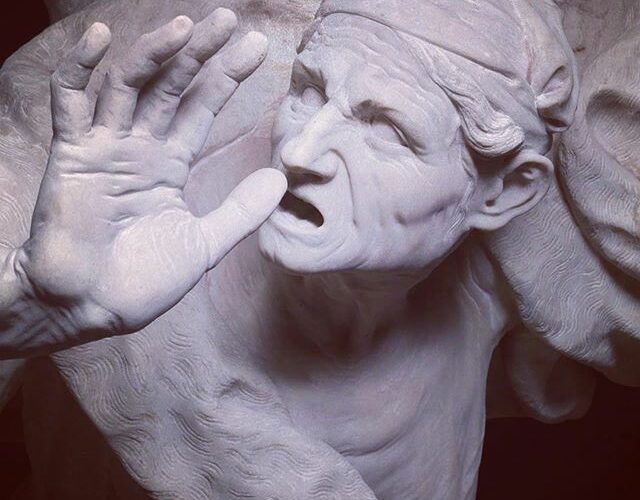The Black Death was the most devastating pandemic ever recorded, resulting in the death of between 75 and 125 million people. It reached its peak in Europe between 1347 and 1351, having come on Italian merchant ships from Asia via the Silk Road. In fact the idea of quarantine originates in plague-stricken fourteenth-century Italy, when ships arriving in Venice from infected ports were required to wait offshore for forty days before docking. The word “quarantine” derives from the Italian quaranta giorni—forty days.
The Italian territories were the cradle of early capitalism. Lombardy and Tuscany were the most advanced cities. Trade and industry developed there in the thirteenth century, favoured by their trade routes to the Orient.
The social order of the Venetian state was determined by its economic interests and included the nobility; therefore its constitution remained aristocratic. This was different in Florence, the second most powerful city in Italy. Florence had a constitution since 1293 that excluded the nobility from the government and transferred its administration exclusively to the patricians. Its council, however, excluded small craftsmen and the common people. At that time Florence was unique in Europe for its constitution based on bourgeois-democratic principles.
This new emphasis on the merchants, artisans and patricians brought with it the growing importance of their vernacular. Dante Alighieri (c. 1265–1321), Francesco Petrarca (1304–1374) and Giovanni Boccaccio (1313–1375) all wrote in the Florentine dialect.
Boccaccio gave the world one of its most well-known and widely read books, the Decameron. Its introduction and frame story bring the plague to life. (Given present circumstances, we refrain from delving into the gruesome details; we leave this to the interested reader.)
The idea of a great many stories collected within a frame story was not altogether new. Centuries earlier the Middle East had produced One Thousand and One Nights (Arabic ’Alf-Laylah wa-Laylah), the earliest manuscripts dating from the ninth century. These reflect a different kind of society, a feudal society, and yet they do this with as much vividness and cheekiness as Boccaccio would use to describe his world. The Persian poet Hafez (1315–1390), on the other hand, wrote satirical and love poetry that finds a parallel in Petrarca.
Boccaccio’s frame story goes like this: Ten wealthy young people leave Florence in order to escape the plague, moving to a country villa, not without some servants. They decide that they will each rule for a day and preside over a set time every afternoon, when each one tells a story, on a different theme each day.
What unfolds is a panorama of fourteenth-century Florentine life, with some of the stories having originated in different cultures. Many of the stories satirise clerical lust and greed, the adventures of travelling merchants—and their wives at home—and tensions between the new wealthy commercial class and noble families.
Quite a few of the stories are explicitly sexual. However, while this doubtless contributed to the book’s enormous popularity, it would be wrong to reduce the book to its sexual theme. In fact it became a rich source for writers of world literature. One example is the third story of the first day, a story with origins preceding Boccaccio. The great German Enlightenment poet Lessing discovered the story and based his famous play Nathan the Wise on it. This play about the equal value of all religions and cultures was the first one staged in many German theatres after the Second World War.
All this said, the way in which the Decameron was most richly emulated was by Geoffrey Chaucer in his Canterbury Tales. His marvellous tales, written between 1387 and 1400, take from Boccaccio the idea of a frame story: the ride from London to Canterbury, with thirty pilgrims telling cheeky and bawdy stories to pass the time. Yet Chaucer’s pilgrims come from three distinct classes of society—the nobility, the clergy, and the common people—all more concerned with worldly things than spiritual ones.
Had Chaucer completed this project there would be 120 stories; but he only finished 24 of these. Nevertheless the tales we do have paint a similarly vivid picture of fourteenth-century England, as Boccaccio’s do of Florence.
Like Dante, Petrarca, and Boccaccio, Chaucer wrote his masterpiece in the vernacular. It is hard to imagine today just what a new departure this was. For over three hundred years, since the Norman invasion of 1066, English had not been spoken by the nobility, by the upper classes, in England. Anglo-Saxon as the vernacular developed like wildfire over the historically very short period of three hundred years into Middle English, a form of the language that we can still understand, with some effort.
The Canterbury Tales is the first great work of English literature, establishing the artistic legitimacy of vernacular Middle English, as opposed to French or Latin. At the same time John Wycliffe translated the Bible into vernacular English (1382). This challenge to Latin as the language of God was considered a revolutionary act at the time, and the Church banned the translation. Access to the Bible in the vernacular was the key to the Peasant Revolt of 1381, when one of the leaders, John Ball, asked in a sermon: “When Adam delved and Eva span, who was then the gentleman? From the beginning all men by nature were created equal.”
The vernacular was crucial for social change. Using it meant identifying with the people, it meant standing up to an elitist and exclusive ruling class, it meant empowering the people to understand the injustice of their situation and thus to give them a prospect of change. This use of the language of the people, which the Renaissance brings us, is deeply connected with the struggle for a new era.






